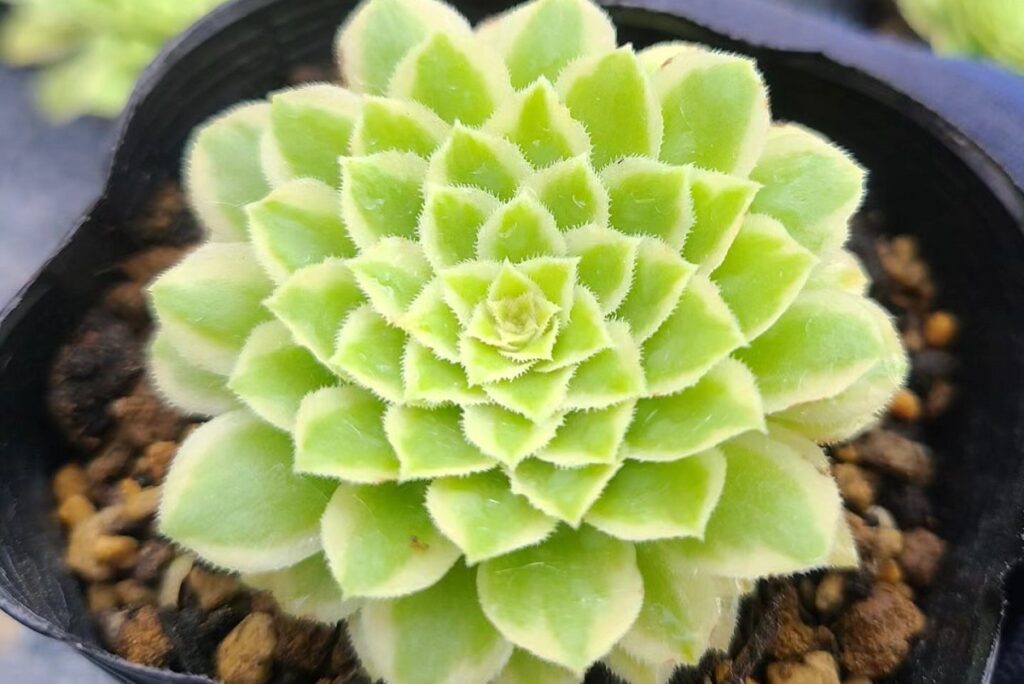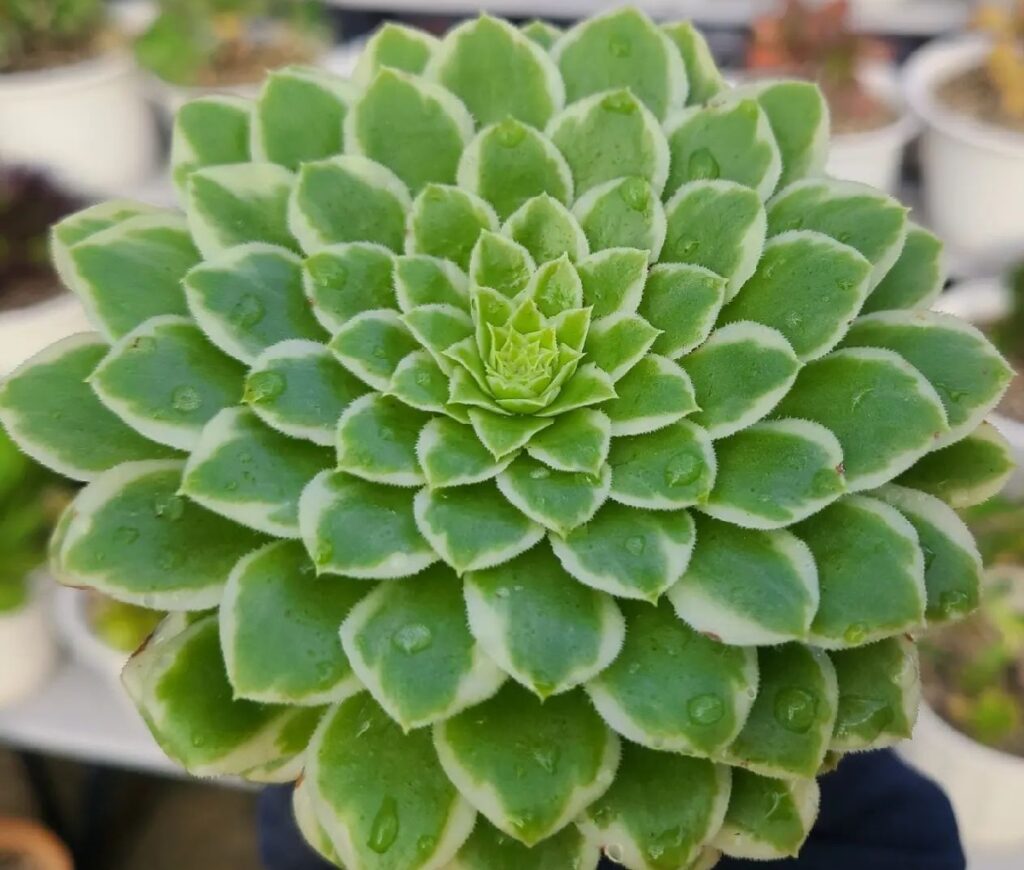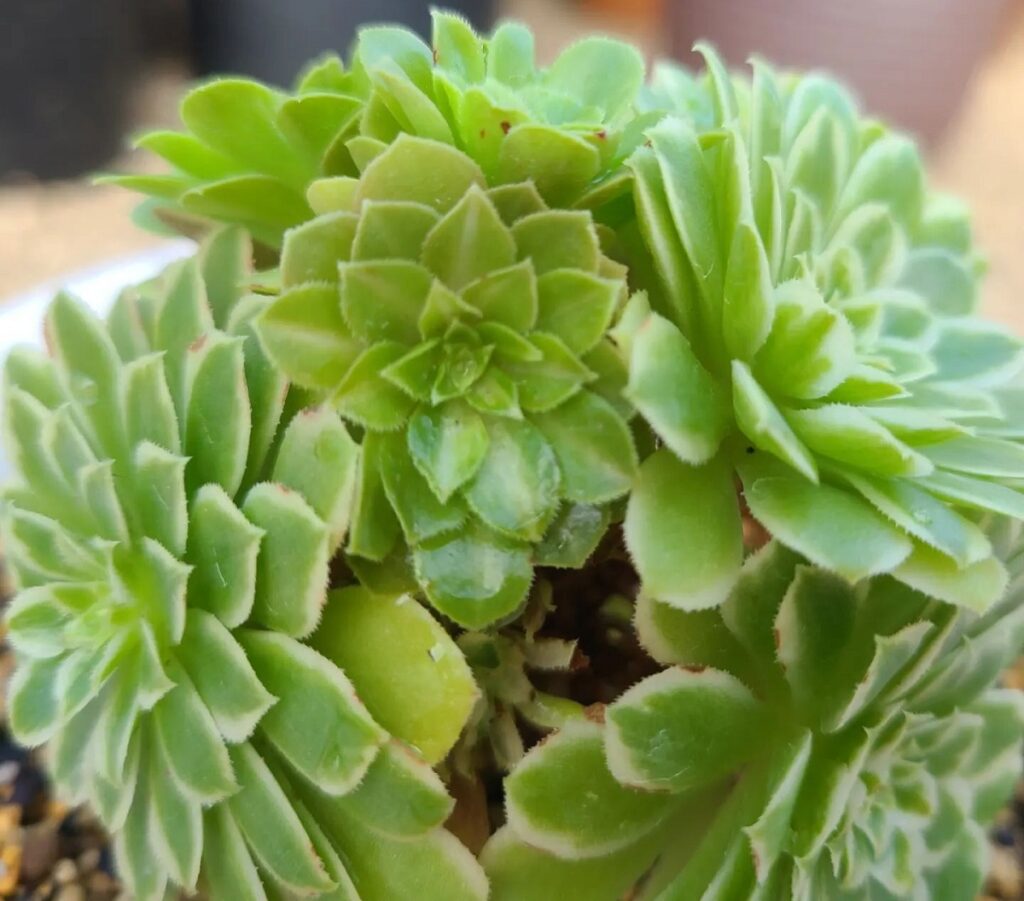Unbelievable Variegation: Aeonium Emerald Ice’s Mesmerizing Geometric Patterns
Get ready to be hypnotized by the coolest succulent around – the Aeonium ‘Emerald Ice’! This eye-catching plant is a showstopper with its concentric rosettes made up of striped green and creamy white leaves arranged in mind-blowing geometric patterns. And get this – these rosettes can grow up to 1 foot wide! Talk about succulent goals.
If you’re looking to add some serious wow factor to your indoor plant collection or outdoor garden, the Emerald Ice is an absolute must-have. Its unique variegated leaves create a living kaleidoscope that’s simply mesmerizing to look at. But this succulent isn’t just a pretty face – it’s also a total low-maintenance dream. Keep reading to learn all about caring for your new favorite plant!

Contents
About Aeonium Emerald Ice
The Aeonium ‘Emerald Ice’ is a variety of succulent known for its striking geometric rosette form. The individual fleshy leaves alternate between green centers and creamy white edges, creating a striped variegated pattern as they spiral outwards concentrically. As the rosettes mature, they can reach up to an impressive 12 inches across!
This succulent really is a feast for the eyes with its symmetrical shapes and colors. No wonder it’s such a sought-after collector’s plant for succulent enthusiasts. But the Emerald Ice isn’t just beautiful – it’s also super easy to care for if you follow some simple tips.
Related Post:
58 Aeonium Varieties With Pictures
How To Care For Aeonium Emerald Ice
Light
To really make those colors pop, the Emerald Ice needs plenty of bright, direct sunlight year-round. A south-facing window is ideal for indoor plants. If you don’t get enough natural light, use a grow light positioned about 6 inches above the plant for 12-14 hours per day.
Water
Like most succulents, this variety doesn’t need frequent watering. Only water when the top 1-2 inches of soil is completely dry. During the growing season (spring through fall), give your Emerald Ice a good soak about every 2 weeks. In the winter months, you can cut back to watering just once a month.

Soil
Succulents do best in a really well-draining potting mix to prevent rot. Use a blend made specifically for cacti and succulents, or make your own by mixing 3 parts regular potting soil with 2 parts coarse sand or perlite. The right soil mix allows excess moisture to escape easily.
Fertilizer
These gals are pretty unfussy when it comes to food. A balanced liquid fertilizer diluted to half strength every 4-6 weeks during the growing period is plenty. No need to feed in the winter when growth is minimal.
Temperature and Humidity
Emerald Ice prefers the same temperatures we do – between 65-75°F year-round. Humidity levels don’t need to be strictly monitored for this variety. Just avoid really dry air by occasional misting.
Pests and Problems
The biggest threats are usually due to overwatering or poor drainage, which can cause rot or fungal issues. Be on the lookout for common pests like mealybugs or scale. An occasional shower with insecticidal soap keeps bugs at bay.
Pruning
These low-maintenance plants rarely need pruning aside from removing any dead or damaged leaves and spent flowers. You can use clean shears to carefully shape or remove extra offsets if desired.
Potting and Repotting
Emerald Ice does best with a little room for its rosettes to spread out, so choose a pot just a few inches wider than the plant itself. Repot every 2-3 years in the early spring using fresh succulent soil.
How to Propagate Aeonium Emerald Ice

One of the best things about these geometric gems? You can easily multiply your collection by propagating new plants from stem or leaf cuttings! Here’s how:
For Stem Cuttings:
- Use a sterile knife or shears to cut off a 3-4 inch stem piece
- Allow the cutting to dry for 2-3 days so the wound calluses over
- Once calloused, stick the cutting into a well-draining potting mix
- Place in bright, indirect light and water sparingly until new growth appears
For Leaf Propagation:
- Gently twist or cut off a mature leaf from the main rosette
- Let the leaf dry for 2-3 days to callous
- Lay the calloused leaf on top of succulent soil and anchor it down
- Lightly mist the soil whenever it fully dries out
- In a few weeks, tiny rosettes will sprout from the leaf!
With their show-stopping looks and easy care, the Aeonium Emerald Ice really ticks all the boxes for stellar houseplants or garden centerpieces. Add some geometric eye candy to your plant collection today!
